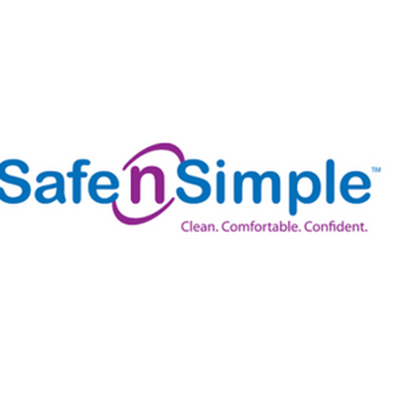Notifications
ALL BUSINESS
COMIDA
DIRECTORIES
ENTERTAINMENT
FINER THINGS
HEALTH
MARKETPLACE
MEMBER's ONLY
MONEY MATTER$
MOTIVATIONAL
NEWS & WEATHER
TECHNOLOGIA
TV NETWORKS
VIDEOS
VOTE USA 2026/2028
INVESTOR RELATIONS
COMING 2026 / 2027
ALL BUSINESS
COMIDA
DIRECTORIES
ENTERTAINMENT
FINER THINGS
HEALTH
MARKETPLACE
MEMBER's ONLY
MONEY MATTER$
MOTIVATIONAL
NEWS & WEATHER
TECHNOLOGIA
TV NETWORKS
VIDEOS
VOTE USA 2026/2028
INVESTOR RELATIONS
COMING 2026 / 2027
About Me
 Safe n Simple
Safe n Simple SNS Medical: Leading Innovators in Medical Care since 2007. Specializing in wound care products, we prioritize customer well-being. Our goal is to simplify healthcare journeys with advanced, affordable solutions. Comprised of passionate professionals, we offer diverse products like ostomy care, wound dressings, and urological supplies. Customer satisfaction drives us, with testimonials reflecting our quality. Achieving milestones, we set industry standards. Choose SNS Medical for a healthier, confident lifestyle. Explore our solutions today.
 Safe n Simple -
July 1, 2024 -
Health -
275 views -
0 Comments -
0 Likes -
0 Reviews
Safe n Simple -
July 1, 2024 -
Health -
275 views -
0 Comments -
0 Likes -
0 Reviews
In the realm of wound care, advancements in medical technology continually aim to improve patient outcomes and expedite recovery processes. Among these innovations, silicone foam dressings have emerged as a significant breakthrough. Their unique properties and benefits have positioned them as a key tool in promoting faster and more effective healing. This article explores why silicone foam dressings are essential in accelerating recovery, highlighting their advantages and the science behind their efficacy.
Silicone foam dressings are a type of advanced wound care product designed to manage exudate (wound fluid) and maintain an optimal healing environment. These dressings are composed of a soft, flexible foam layer that absorbs excess moisture, coupled with a silicone adhesive layer that adheres gently to the skin. This combination of materials creates a dressing that is both effective in wound management and gentle on the skin.
Effective wound healing requires a balanced moisture environment. Too much moisture can lead to maceration (softening and breaking down of skin), while too little can cause the wound to dry out and form scabs, delaying healing. Silicone foam dressings excel in moisture management by absorbing exudate while maintaining a moist wound environment. This balance promotes cellular activities necessary for healing, such as migration of epithelial cells and formation of new tissue.
Traditional wound dressings often adhere strongly to the wound bed, which can cause significant pain and tissue damage upon removal. In contrast, the silicone adhesive layer in silicone foam dressings adheres securely yet gently, minimizing trauma to the wound and surrounding skin. This characteristic is particularly beneficial for patients with sensitive skin or chronic wounds that require frequent dressing changes. Reduced pain and trauma not only improve patient comfort but also prevent further injury to the healing tissue, thereby speeding up recovery.
Infections are a major concern in wound care as they can severely impede the healing process and lead to complications. Silicone foam dressings act as a physical barrier against external contaminants, reducing the risk of infection. Moreover, some silicone foam dressings are impregnated with antimicrobial agents that actively kill or inhibit the growth of bacteria. This dual-action approach ensures that the wound remains protected from potential infections, facilitating a smoother and faster recovery.
Silicone foam dressings are highly adaptable and can conform to various body contours, making them suitable for wounds in challenging locations. Their flexibility ensures that they stay in place even on moving body parts, such as joints, without causing discomfort. Additionally, the soft and cushioning nature of the foam layer provides added comfort to the patient, which is crucial for improving compliance with wound care protocols and overall patient well-being.
The efficacy of silicone foam dressings in accelerating recovery is grounded in their ability to create an optimal healing environment. The moist environment facilitated by these dressings promotes key physiological processes involved in wound healing. For instance, fibroblasts and keratinocytes, which are essential for tissue regeneration and repair, thrive in a moist setting. The reduced trauma from gentle adhesion preserves the new tissue and surrounding skin, preventing setbacks in the healing process.
Furthermore, the antimicrobial properties of certain silicone foam dressings help maintain a low bioburden (presence of microorganisms) at the wound site. By controlling the microbial load, these dressings prevent infections that could otherwise prolong the inflammatory phase of wound healing and delay tissue repair.
Silicone foam dressings are versatile and can be used in various clinical settings and for different types of wounds, including surgical incisions, pressure ulcers, diabetic foot ulcers, and traumatic wounds. Their broad applicability and proven effectiveness have made them a staple in both hospital and home care environments. Studies have shown that patients using silicone foam dressings experience faster healing times, fewer dressing changes, and lower overall treatment costs compared to traditional dressings.
In conclusion, silicone foam dressings represent a pivotal advancement in wound care technology, offering a multitude of benefits that contribute to faster recovery. Their superior moisture management, gentle adhesion, infection control, and adaptability make them an indispensable tool for healthcare providers and patients alike. As the understanding and development of wound care products continue to evolve, silicone foam dressings stand out as a testament to how innovative materials and design can significantly improve patient outcomes and expedite the healing process. Embracing these advanced dressings in clinical practice is not just an option but a necessity for achieving optimal wound care and recovery.